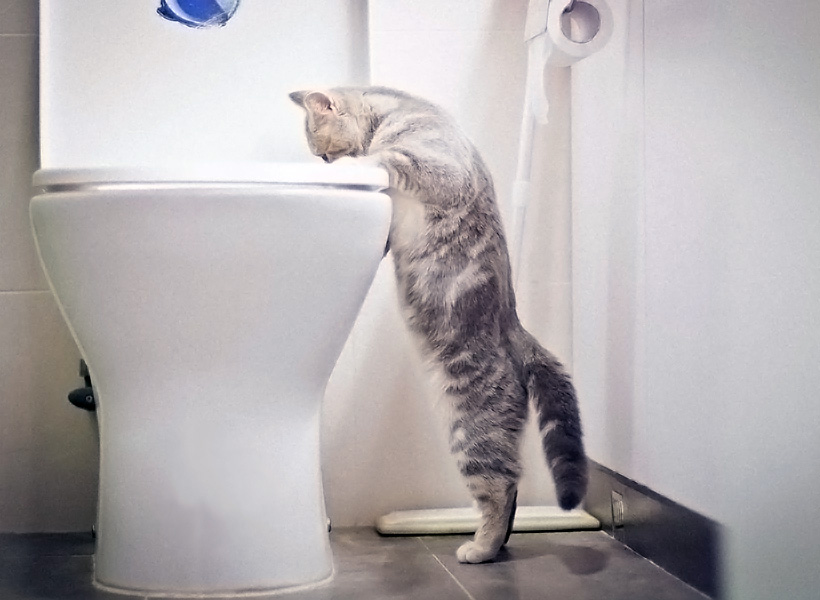Why Flushing Cat Poop Down Your Toilet Can Cause Problems - Tips for Proper Handling
Why Flushing Cat Poop Down Your Toilet Can Cause Problems - Tips for Proper Handling
Blog Article
How do you feel when it comes to Can You Flush Cat Poop Down The Toilet??

Intro
As cat owners, it's necessary to bear in mind how we take care of our feline friends' waste. While it might seem hassle-free to flush cat poop down the commode, this method can have destructive repercussions for both the atmosphere and human health.
Alternatives to Flushing
Luckily, there are safer and more liable means to dispose of pet cat poop. Take into consideration the following options:
1. Scoop and Dispose in Trash
One of the most typical technique of dealing with cat poop is to scoop it right into a biodegradable bag and toss it in the trash. Make certain to utilize a dedicated trash inside story and throw away the waste promptly.
2. Use Biodegradable Litter
Select biodegradable cat trash made from materials such as corn or wheat. These trashes are eco-friendly and can be safely thrown away in the trash.
3. Hide in the Yard
If you have a backyard, take into consideration hiding cat waste in a marked location far from veggie gardens and water sources. Be sure to dig deep enough to prevent contamination of groundwater.
4. Install a Pet Waste Disposal System
Buy a pet dog waste disposal system specifically designed for pet cat waste. These systems make use of enzymes to break down the waste, minimizing odor and environmental influence.
Wellness Risks
In addition to environmental problems, purging feline waste can also posture wellness dangers to people. Cat feces might consist of Toxoplasma gondii, a bloodsucker that can cause toxoplasmosis-- a potentially extreme disease, particularly for expectant ladies and individuals with weakened body immune systems.
Environmental Impact
Flushing pet cat poop presents damaging pathogens and bloodsuckers into the water supply, posturing a significant threat to water communities. These contaminants can adversely impact aquatic life and compromise water quality.
Final thought
Liable family pet ownership prolongs beyond supplying food and shelter-- it additionally involves correct waste administration. By avoiding flushing pet cat poop down the bathroom and going with alternative disposal approaches, we can lessen our ecological footprint and shield human health.
Why Can’t I Flush Cat Poop?
It Spreads a Parasite
Cats are frequently infected with a parasite called toxoplasma gondii. The parasite causes an infection called toxoplasmosis. It is usually harmless to cats. The parasite only uses cat poop as a host for its eggs. Otherwise, the cat’s immune system usually keeps the infection at low enough levels to maintain its own health. But it does not stop the develop of eggs. These eggs are tiny and surprisingly tough. They may survive for a year before they begin to grow. But that’s the problem.
Our wastewater system is not designed to deal with toxoplasmosis eggs. Instead, most eggs will flush from your toilet into sewers and wastewater management plants. After the sewage is treated for many other harmful things in it, it is typically released into local rivers, lakes, or oceans. Here, the toxoplasmosis eggs can find new hosts, including starfish, crabs, otters, and many other wildlife. For many, this is a significant risk to their health. Toxoplasmosis can also end up infecting water sources that are important for agriculture, which means our deer, pigs, and sheep can get infected too.
Is There Risk to Humans?
There can be a risk to human life from flushing cat poop down the toilet. If you do so, the parasites from your cat’s poop can end up in shellfish, game animals, or livestock. If this meat is then served raw or undercooked, the people who eat it can get sick.
In fact, according to the CDC, 40 million people in the United States are infected with toxoplasma gondii. They get it from exposure to infected seafood, or from some kind of cat poop contamination, like drinking from a stream that is contaminated or touching anything that has come into contact with cat poop. That includes just cleaning a cat litter box.
Most people who get infected with these parasites will not develop any symptoms. However, for pregnant women or for those with compromised immune systems, the parasite can cause severe health problems.
How to Handle Cat Poop
The best way to handle cat poop is actually to clean the box more often. The eggs that the parasite sheds will not become active until one to five days after the cat poops. That means that if you clean daily, you’re much less likely to come into direct contact with infectious eggs.
That said, always dispose of cat poop in the garbage and not down the toilet. Wash your hands before and after you clean the litter box, and bring the bag of poop right outside to your garbage bins.
https://trenchlesssolutionsusa.com/why-cant-i-flush-cat-poop/

I was introduced to that report on How to Dispose of Cat Poop and Litter Without Plastic Bags from an acquaintance on another website. Remember to take a moment to distribute this blog posting if you appreciated it. We appreciate reading our article about How to Dispose of Cat Poop and Litter Without Plastic Bags.
Information Here Report this page